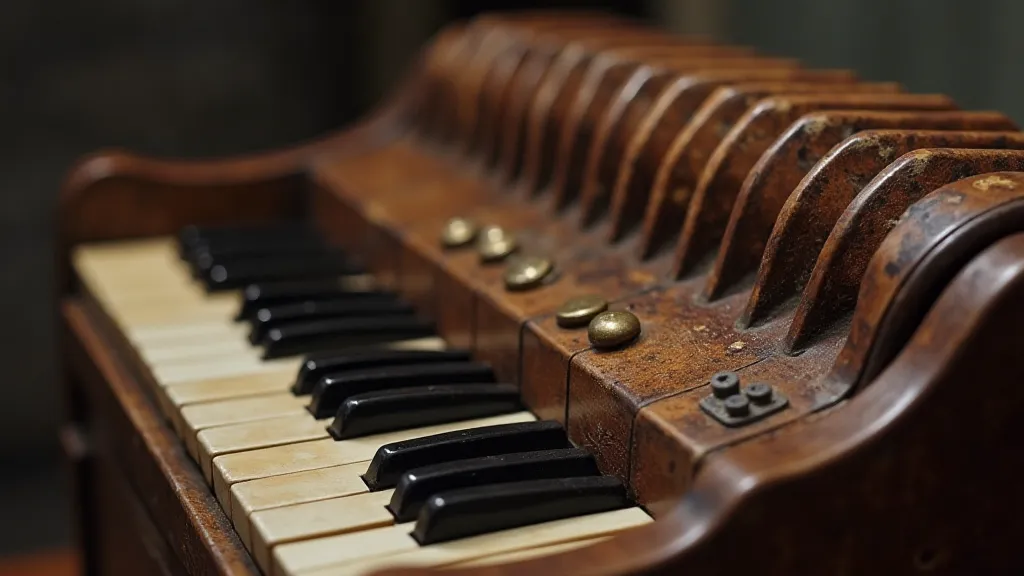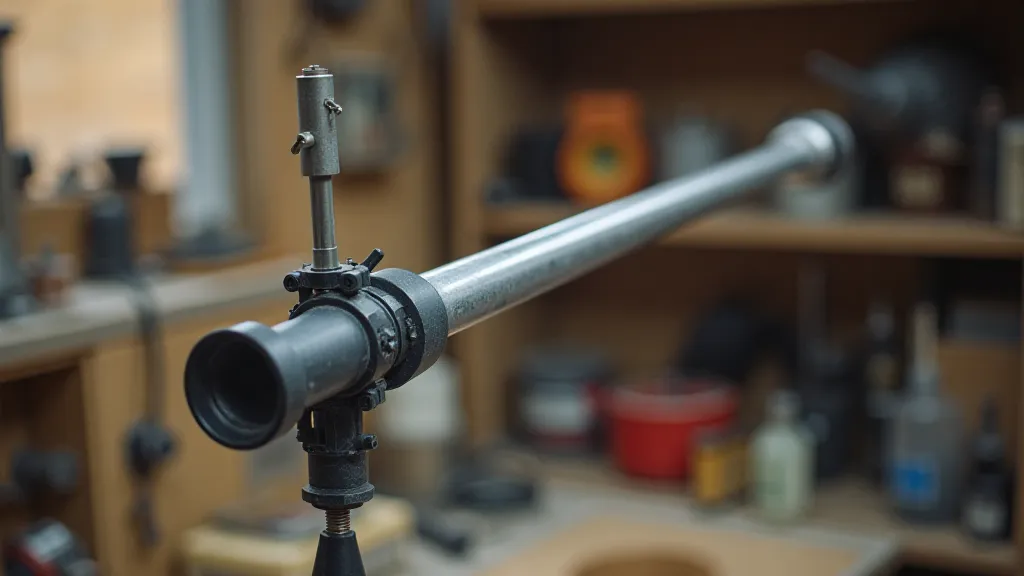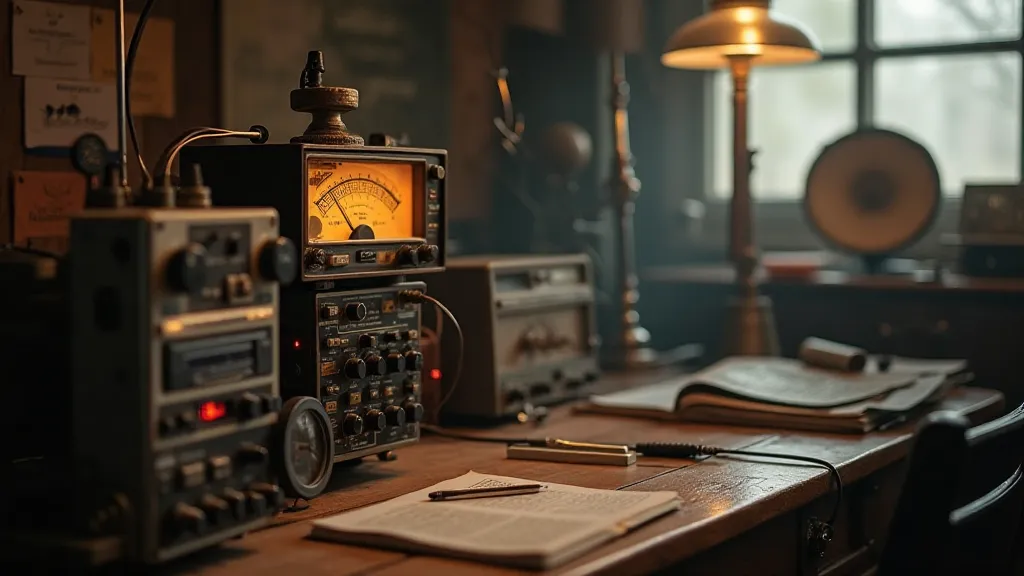The Cartographer’s Compass: Directional Antennas and the Art of Signal Mapping
There’s a quiet beauty in precision, a profound satisfaction in finding what’s lost, and a peculiar magic in tracing lines on a map. I often think of this when I'm working on a beam antenna. It’s not simply about amplifying a signal; it's about actively searching, about drawing a line from your station to another, a beacon across the airwaves. It reminds me of my grandfather’s antique accordion, a Hohner Promenade III, its bellows worn smooth by countless hands, its keys subtly mismatched – a testament to the craftsman's imperfections, yet beautiful in its history. Each note it produced was a faint echo of a lost tradition, and equally, each carefully shaped lobe of a beam antenna reveals a hidden facet of the radio landscape.
My grandfather, a travelling salesman in the 1930s, carried that accordion everywhere. He’d play for customers, for townsfolk gathered around a bonfire, and sometimes, just for the wind. He's gone now, but that accordion sits in my workshop, a constant reminder of the human desire to connect, to share something, to be heard. And so too with ham radio, with the dedication it requires, and especially with the pursuit of directional antennas.

Beyond Omnidirectional Coverage: The Need for Direction
Early ham radio operators were often content with simple, omnidirectional antennas – dipoles, verticals – antennas that broadcast in all directions. These serve their purpose, especially for local communication and experimentation. But as the hobby evolved, so did the desire for long-distance contacts, for specific targets, and for a deeper understanding of signal propagation. That’s where directional antennas come into play. They aren't just about range; they're about control. They are tools for focusing your energy, for minimizing interference, and for truly listening to the faint whispers carried on the ionosphere.
The Principles of Beam Shaping
The core concept behind any directional antenna is the manipulation of the electromagnetic field. An omnidirectional antenna generates a field that radiates equally in all directions. A directional antenna, on the other hand, is designed to enhance the field in a specific direction (the “main lobe”) while suppressing or nullifying it in other directions. This shaping is achieved through various techniques. Simple Yagis, for instance, use a driven element and a series of reflectors and directors. Reflectors make the signal bounce back, while directors focus the signal forward. The spacing and length of these elements are critical for optimal performance.
Understanding the relationship between element length, spacing, and frequency is paramount. A small change in these parameters can drastically alter the antenna's gain and beamwidth. This isn’s just engineering; it’s an art. It's like tuning an instrument – a slight adjustment can create a symphony or a cacophony.
Nulling and Interference Rejection
While maximizing gain in the desired direction is important, another crucial aspect of directional antennas is the ability to null signals from unwanted directions. These “nulls” are regions of minimal signal strength. By strategically positioning nulls, you can effectively reject interference from nearby stations or unwanted signals bouncing off specific locations. This is particularly useful in densely populated areas or when operating near sources of noise.
Imagine trying to listen to a distant radio station while a local DJ is blaring through your speakers. A well-designed antenna with carefully placed nulls acts as your selective filter, silencing the local chatter and bringing in the faint signal from afar.
Constructing a Simple Beam: The Two-Element Yagi
While complex Yagi designs with dozens of elements can achieve impressive gain and beamwidth characteristics, a simple two-element Yagi is a great starting point for beginners. It offers a good balance of performance and ease of construction. The reflector is slightly longer than the driven element, and the spacing between the two elements is typically one-quarter wavelength. Accurate measurements and careful construction are essential for optimal performance. Even slight inaccuracies can impact the beam pattern.
The construction itself can be quite satisfying. Using PVC pipe, aluminum tubing, or even just wire – the possibilities are numerous. It’s a tactile process, a tangible connection to the principles of electromagnetism. My grandfather, although not a ham radio operator, appreciated craftsmanship. He taught me the value of taking pride in your work, of ensuring that every joint is secure, every connection clean.
Building your first beam isn’s just about building an antenna; it’s about developing a skill, a new perspective, and an appreciation for the underlying science.
Ground Plane Antennas: A Different Approach to Directionality
Beyond Yagis, ground plane antennas offer another way to achieve directionality. These often utilize a driven element surrounded by multiple radials, which act as a reflector and contribute to a directional pattern. While generally less efficient than a well-designed Yagi, ground planes are often simpler to construct and can be particularly useful for VHF and UHF applications.
The simplicity of a ground plane, with its radiating element and radiating ground plane, offers a different aesthetic, a stripped-down elegance, much like a classic accordion design stripped of unnecessary ornamentation, focusing on the pure function of producing sound.

Creating Accurate Signal Maps
Once you have a directional antenna, the next step is to map its performance. This involves rotating the antenna and measuring the signal strength in different directions. This process allows you to visualize the antenna's beam pattern and identify areas of peak gain and nulls.
Signal mapping isn’t just about creating a pretty picture; it's about gaining a deeper understanding of your antenna’s behavior. It's about taking what's theoretical and making it real, tangible. Just as a cartographer uses instruments and calculations to create a map of the world, a ham radio operator uses a directional antenna and careful measurements to map the radio landscape.
Early cartographers relied on rudimentary instruments and painstaking observations. Their maps were imperfect, but they represented a profound effort to understand and represent the world. Similarly, a ham radio operator’s signal map, created with a simple directional antenna and a little patience, is a testament to human curiosity and the desire to explore and connect.

The Enduring Appeal of Ham Radio and Antenna Building
The pursuit of directional antennas in ham radio is more than just a technical endeavor; it’s a blend of science, art, and personal connection. It's about the satisfaction of building something with your own hands, of mastering a complex technical skill, and of expanding your horizons in the world of radio communication. Like the enduring charm of an antique accordion, a well-crafted antenna embodies the beauty of human ingenuity and the power of connection.





